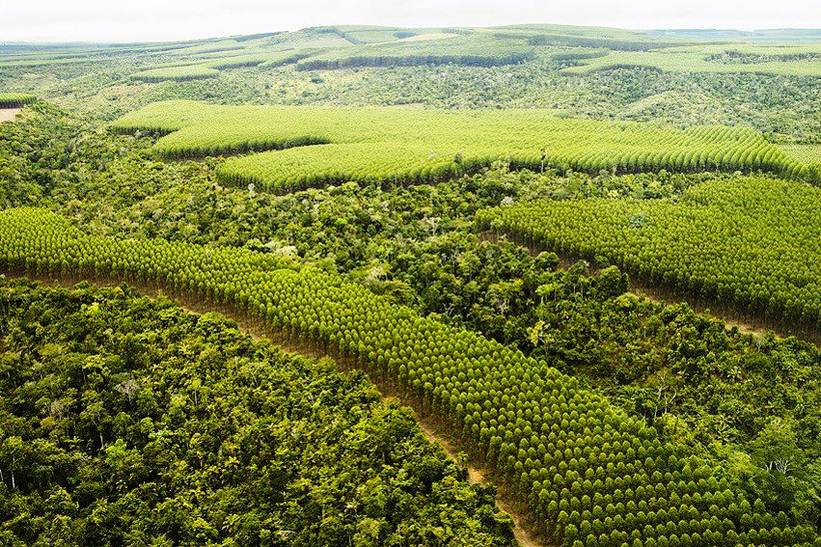- Home
-
Products
- News
- About
- Become a Distributor
Global - English

In Latin American, Brazil is famous for its 'powerhouse' identity as the world's major exporter of agricultural products such as soybeans, maize, and rice. Ranked 1st on natural resources out of all countries, Brazil's agricultural-related sectors including forestry and logging also accounted for 6.9% of the national GDP, according to the Brazilian Industry of Planted Trees (IBA).
Most Profitable Trees to Grow
In southeastern Brazil, you can easily find a spectacular landscape of forests and woods: vast densely planted forests spread to the horizon just like a nicely weaved dark green carpet, with millions of neatly arrayed trees swaying amidst the breeze.

The vast densely planted forests in Brazil (Source: Tecponta)
Among all tree species in plantations, eucalyptus can rapidly grow over 10 meters within a year, making it one of the most profitable plant cultivations. However, eucalyptus saplings can be vulnerable to the Eucalyptus snout beetles, a destructive insect pest that feeds on young leaves and has caused wood losses of 648 million euros in the past 20 years.
Traditionally, plantation managers used self-propelled sprayers to apply pesticides for their freshly planted saplings. Unlike most crops in Brazil, eucalyptus is usually located at hilly sloped areas, which makes it a difficult task for large ground machinery to access with timely care. In a long period of time, plantation managers have been seeking smarter alternatives for tree protection.

Traditional tools like self-propelled sprayers used to spray pesticides for saplings (Source: Tecponta)
Defend against Snout Beetles
This summer, when snout beetles launched an attack, agricultural drones as new helpers have actively pitched in to defend the forests. On June 24 to 25, witnessed by a group of plantation managers and experts from pulp and paper company, agricultural drone fleet from XAG was sent for tree spraying demonstration in Botucatu, State of Sao Paulo.

Plantation managers and experts witnessing the XAG agricultural drone fleet spraying (Source: Tecponta)
Controlled by one single pilot, XAG drones easily crossed through complex landform from 2-3 meters above the canopy, entering rugged terrains to spray precisely without restriction.

One single pilot controlling XAG drones for the forest protection mission (Source: Tecponta)
Flying spirally above the top of trees, the drone could cover the whole canopy. Through powerful downdraft, the atomised droplets better penetrated the bark and leaves top down, providing reinforced protection against wood pests and preventing severe income loss to plantation owners.
"In Brazil, spray drones are mainly used for controlling agricultural pests, diseases, and weeds with biological products. Currently, some forest science research institutes as well as pulp and paper companies are starting to explore the possibilities of drone applications in forest management. We are now ready to support with XAG's drone technology," said Antonio Ferreira, Director of Megadrone Brazil.

Using spray drones to explore the possibilities of forest management (Source: Tecponta)